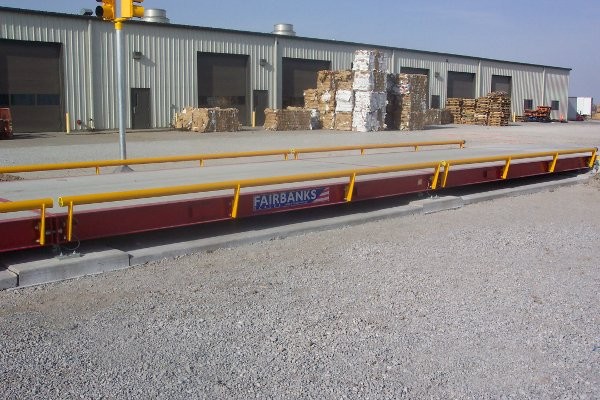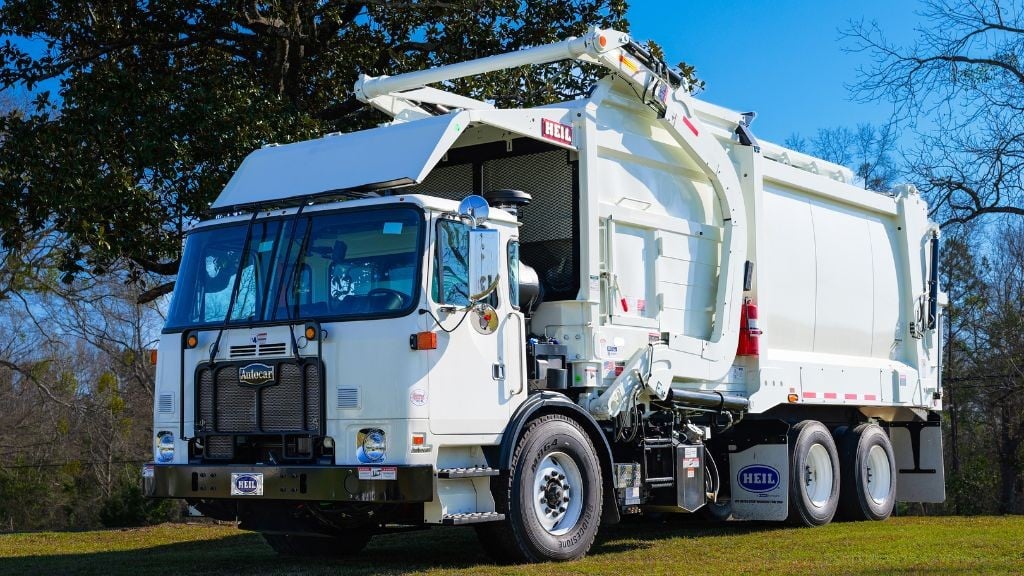Truck scale owners’ best practices in recycling and solid waste

In today’s recycling and solid waste industry, uptime is of utmost importance. Most facilities experience long lines at the scale, and so they place a premium on getting trucks in and out quickly. However, have you ever stopped to think about how much you could be losing per truck?
When a scale is placed in service, it requires certification to ensure it meets the necessary regulatory requirements. Manufacturers assure recyclers that the scale is capable of holding accurate tolerances. Unfortunately, external variables and real-world issues can knock a scale out of calibration and cost a great deal of money.
A simple error of one increment (20 pounds) can lead to $30,000 in annual product loss. This is from a real-world example and is based on a product with a value of $0.05 per pound and a duty cycle of 100 weighments per day. In light of potential loss that could be incurred due to out-of-calibration scale errors, implementing standard best practices to prevent such loss is a very good idea.
The simplest step you can take is to implement a calibration and inspection agreement with your service provider. Depending on the requirements and type of weighing device, inspection costs can be as low as $500 annually depending on the frequency required to assure accurate weighing and to reduce the risk of loss due to an inaccurate scale. Compared to potential loss figures, this is a worthwhile investment.
But how often should your scale be inspected? Fairbanks Scales, a leading provider of top quality industrial weighing equipment and service based out of Kansas, recommends a minimum of two inspections per year for most scales. But the sort of heavy traffic recycling and solid waste facilities experience can easily justify more frequent verification, inspection, and service. Consult with your scale service company about a schedule that works best for your company.
What to look for in a service provider
“Investigate the longevity of the company,” recommends Mike Wilkinson, Product Manager at Fairbanks. “How long have they been in business? Do they know the industry? Do they have solutions for the challenges that your business faces?”
“Another good check point is to compare the services provided among service providers,” adds Wilkinson. He says the number one priority of Fairbanks’ calibration and inspection program is to make sure the scale is accurate by testing with certified weights that are traceable to a Federal standard. The servicing company should also be able to produce documentation of the test weights’ traceability.
As a value-added component of the inspection, Fairbanks says they review and inspect electronic and mechanical components to ensure there is no wear or issues looming that could result in inaccuracies or unexpected downtime. After inspection, recyclers and waste managers should be sure the service company provides a written evaluation of the inspection and reviews the condition. This is by far the simplest and most economical way to avoid inaccuracies and unexpected downtime.
In-house maintenance and inspection
Recycling and solid waste operations can generate a great deal of debris. Be sure to regularly remove build-up to avoid scale inaccuracies. A pressure sprayer is a fast and easy way to clear debris and keep a scale and foundation free of build-up. Also make sure that junction boxes, electronics, and load cells are properly rated to withstand pressure washing – otherwise it may cause damage.
When performing inspections, the following steps are recommended.
• Inspect for anomalies. A properly operating scale is dependent on all components working together. Inspect the weighbridge for damage or signs of wear and corrosion.
• Examine the junction boxes inside and out. Do they show signs of damage, corrosion, or moisture entry?
• Module connection hardware should be intact and not damaged.
• Check the load cells for damage, corrosion, and signs of moisture entry into the enclosure and the cable entry gland. Liquid is a good conductor and can easily short your electronics if allowed to enter the sensing element area.
• Some manufacturers feature quick disconnect style load cell cables. Be sure to inspect these connections frequently as they are responsible for a significant number of avoidable failures.
• Inspect wiring for damage. Exposed conductors cause communication errors when wet and are usually the culprit of erratic performance.
• Your scale’s paint system isn’t just for good looks. It’s a critical barrier against scale corrosion on your weighbridge steel. Be sure to reapply if you expect maximum life from the weighbridge steel.
• If your scale has cover plates, inspect the connection hardware and make sure they are there, functional and are not packed with mud and debris.
• Grease the load cell cups at recommended intervals. Some manufacturers incorporate zerk type fittings allowing grease application without the need to physically separate the load cell components.
• Inspect concrete for signs of failure. Address these issues as soon as possible. Left unchecked, it will only get worse and will cause larger and more costly problems.
Make adjustments and keep it grounded
Your weighbridge will expand and contract slightly at different times of the year. This is natural. This thermal expansion requires attention and readjustment through checking. The checking system on your scale keeps the weighbridge in place as it naturally rocks and moves from traffic. Too small a gap in the checking can cause binding and weighing errors. Too much gap in the checking allows excessive movement, up to and including a scale tipping incident. Excessive movement adds unnecessary wear to other components, so be sure the checking is properly secure.
Today’s truck scales use sophisticated electronics to communicate weighment data to the instrument. A securely grounded scale is a basic defence from lightning and power surges. Be sure that the scale is connected to the manufacturer’s specified grounding system and that there are no interruptions in this system. If your scale isn’t grounded through a ground rod connection, it surely is grounded through other components. Disrupting the ground connection shunts power surges to other places, like your load cells or electronics. Damaged electronics can cost thousands.
Monitor your scale’s use and consider accessories
You probably don’t have the time to monitor how fast traffic enters and exits the scale. However, keep in mind that while the scale is designed to move slightly with traffic, abusive and aggressive entrance and exiting of traffic accelerates wear. Again, taxing a scale means more wear and more dollars spent in repairs. Many scale manufacturers offer accessories to promote traffic discipline while entering and exiting your scale. Traffic signals and guide post kits at the approach and exit can manage traffic flow and truck speed very effectively for a small investment.
Consider the accessories below, developed from real-world experience, specifically to prevent issues with truck scales.
• Riser plates. “Be very wary of low-profile scales,” says Wilkinson, “Reducing the clearance under the scale gets you two things: one, it takes less debris accumulation to impact the accuracy of a low-profile scale; secondly, it makes cleaning your scale much more difficult as the underside is impossible to reach.” Riser plates elevate your weighbridge, reducing the risk of debris accumulation and providing clearance for cleaning and inspection.
• Load cell boots. Exposed to debris, weather, moisture, and even product that has migrated below the deck, your load cells operate in the worst environment possible. Load cell boots act like a protective glove and prevent debris from interfering with proper load cell operation.
• Steel and EPDM rubber belting. At each end of your scale, there is a small gap between the scale and foundation. This gap is a great place for dirt, debris and product to fall under the scale and accumulate. Installing T-belting along this gap between the scale and foundation wall is a good step to preventing this accumulation.
Now you may be thinking: “These steps sound great, but I just don’t have the time for my scale to be out of service six times a year.” This is entirely understandable. To keep your inspections frequent without losing too much business to downtime, consider switching to a digital scale.
“Let’s say a typical scale has 8-10 load cells,” explains Wilkinson. “If it’s an analog setup, it could take 4 to 6 hours to get your scale calibrated correctly. Whereas with a digital system, we can see the performance of each individual load cell on the instrument screen. With that ease of access, you’re talking minutes to half an hour for recalibration.”
In the end, how you implement these best practices is up to you. You can partner with a qualified service provider to manage these tasks, or you can go it alone. One thing is certain – neglecting your scale will cost you profit.


